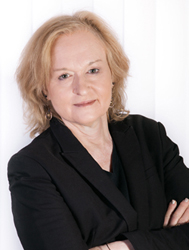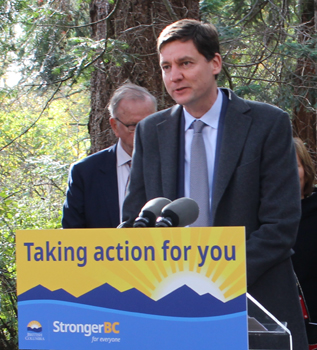
Friday October 27, 2023 | VICTORIA, BC [Updated November 2, 2023]
by Mary P Brooke | Island Social Trends
Sections: ENVIRONMENT & SUSTAINABILITY | POLITICS
NOTE: Federal announcement related to this, coming Friday November 3, 2023. [link to come]
The Province is accelerating protection of B.C.’s oldest and rarest trees while benefiting communities and wildlife by launching a new $300-million Conservation Financing Mechanism: $150 million from the Province, matched by a commitment to raise an additional $150 million from the BC Parks Foundation.
This funding is to speed up efforts to protect vital ecosystems, protect beautiful and rare forests, preserve critical habitat and protect the province against the effects of climate change.
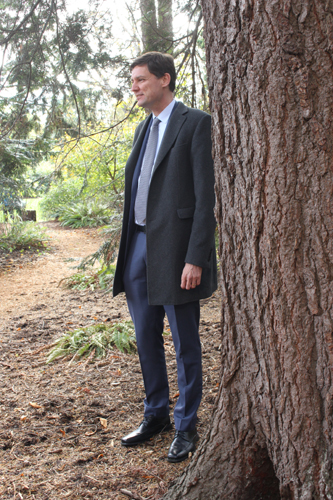
There will be a triad of partners… government, First Nations and private sector. Eby called it “a very good news announcement for our province”.
“This replaces the industry-only planning process,” said Eby, in a way that brings together all of the values of diverse communities across BC.
Cool day at Beacon Hill Park:
The announcement was made outdoors at Beacon Hill Park in Victoria on a crisp cool see-your-breath autumn day yesterday.
But skies were bright, as were the hopes for the future outcomes of the announcement. About 75 people attended, including three cabinet ministers, two parliamentary secretaries, several ministry staffers, and a broader-than-usual range of media (including some that specialize in environmental issues).
Ministers attending were Bruce Ralston (Forests), Nathan Cullen (Water, Land and Resource Stewardship), and George Heyman (Environment and Climate Change). Parliamentary Secretaries attending were (Amandeep Singh for Environment, and Fin Donnelly for Watershed Restoration).
Environment and economy:
“Probably everybody here and certainly all British Columbians have a deep connection to the natural beauty of this place where we live. From the mountains to the ocean, beautiful valleys… it’s a remarkable place where we live,” the Premier said in his introduction surrounded by tall trees, ferns and foliage, and a few squirrels making cameo appearances amidst the fallen autumn leaves. He noted the tourism and recreational aspects of the BC economy that are reliant upon showcasing the natural environment.
He reiterated the now familiar mantra that environment and economy can and should go hand in hand. “Some of our greatest economic strengths come from the preservation work that’s been done and the ability to ensure that this beauty is here for generations to come. We can and must do both things — protect nature and develop our economy,” said Eby at the podium set up in the woods.
“More jobs per tree” will come from mass timber, building housing and developing that industry, and also through protecting old growth and protecting vital ecosystems, said Eby.
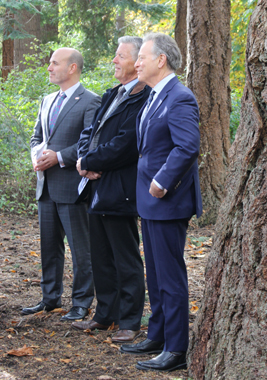
“Conserving nature is one of the most important things we can do to protect against the worst effects of climate change while creating a healthier future for everyone,” said Premier David Eby.
He noted the severe impacts of climate change experienced by most British Columbians this past summer (wildfires, smoky air and heat).
“That’s why we’re working with the BC Parks Foundation and First Nations to launch a new tool that will protect old-growth forests and conserve critical habitat across the province for generations to come.” He emphasized that “local priorities will be protected”.
Minister Cullen:
Minister of Water, Land and Resource Stewardship, Nathan Cullen, hopes that for future generations “we’re beginning to leave the place better than we found it”.
“Few are things that bring British Columbians together more than our love of this place,” said Cullen, highlighting land and water as well as biodiversity. “With that we bear the greatest responsibility to protect and steward that biodiversity,” said Cullen. He said that biodiversity loss and the threats of climate change are a “dual threat”.
The NDP government has committed to protecting 30% of the water and lands of the province by 2030. This is an ambitious goal but it’s possible through these types of partnerships that we are announcing here today. Cullen was given responsibility through his ministry to develop the conservation financing mechanism for achieving the goals.
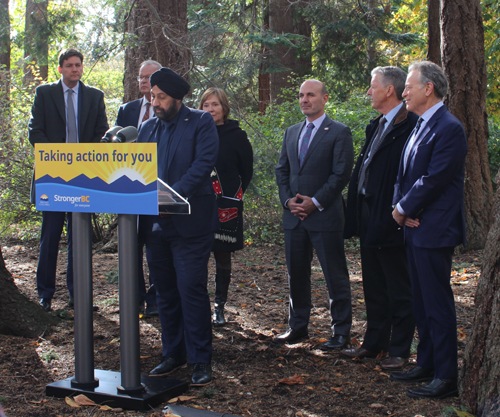
He called the BC Parks Foundation “a proven leader in raising and managing funds”.
Minister Ralston:
Forests Minister Bruce Ralston was keen about the old-growth forest protection while also seeing economic management including jobs involvement of Indigenous communities. “People in B.C. care deeply for our forests, which is why we are accelerating our actions to protect our oldest and rarest forests for future generations,” said Ralston.
Both animals and plants are nurtured by old growth forests, said Ralston. “People in BC are concerned for future generations,” the Forests Minister said. He wants to “see a future where the oldest rarest trees are sustainable and healthy”.
“We are using the best science and data available, and collaborating with First Nations, local communities and industry to create a stronger, more sustainable forest stewardship. New forest landscape plans reflect the generational shift in forestry, where we can depend on a strong and sustainable industry that also safeguards biodiversity and long-term ecosystem health,” said Ralston.
Eight forest landscape plans were considered earlier this year, and now five have been affirmed with local First Nations, said Ralston, itemizing Bulkley Valley, 100 Mile House, Williams Lake, east-central Vancouver Island and west-central Vancouver Island.
Wildfire risk reduction is also part of the planning.
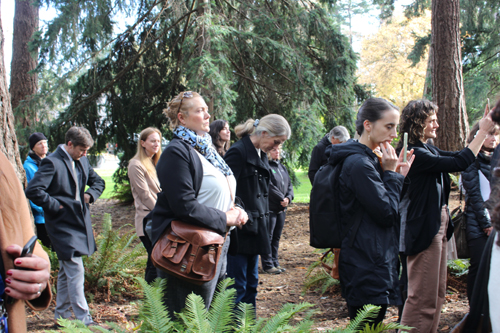
BC Parks Foundation:
BC Parks Foundation Chair Ross Beaty thanked Premier Eby for “his political support of this initiative”, as well as “all the other ministers” (he rattled off Ralston, Rankin, Osborne and Cullen) as well as staff within government departments.
Beaty emphasized that he is from the business community and is used to investing for the long-term. “This is going to be a transformative impact for British Columbia,” said Beaty. With a focus on economic development and jobs, Beaty struggled to readily connect with the concept of climate change adaptation.
The BC Parks Chair highlighted benefits for the tourism industry, ‘getting out of the cycle of natural resources’, and the health-care sector (burdened by people’s health impacts due to an unhealthy environment). “Nature is good for people. It reduces health problems,” he said, adding that a lesser burden on social services might result if youth can stay in communities “instead of ending up in addiction issues”. He sees BC’s new direction for forest and natural space sustainability as “an engine for a new kind of job and economic opportunity”.
Minister Heyman:
Environment and Climate Change Minister George Heyman was also in attendance. His statement in a news release:
“We can have a sustainable economy with good jobs, a rich natural environment and positive relations with First Nations, but we have to do things differently than we have in the past. The issues are connected and can’t be tackled piecemeal by separate groups, agencies, funders and programs.”
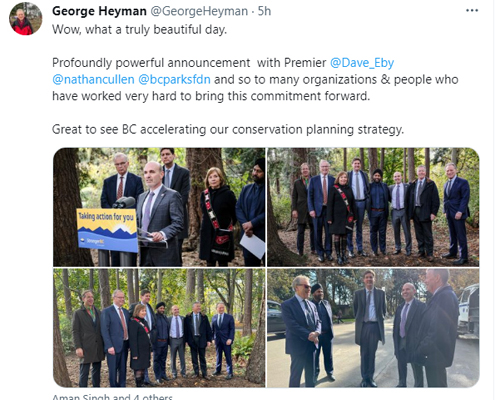
“We need to make it possible for all British Columbians to create real-world solutions that are relevant to where and how they live. It starts with recognizing, empowering and inspiring people to work together. That’s why we are contributing this funding,” said Heyman.
Quick facts:
- B.C. is home to the world’s largest salmon run, one-half of the world’s population of mountain goats and one-quarter of the world’s temperate rainforests, which are essential for the air everyone and everything breathes.
- Old growth is defined as trees more than 250 years old on the coast, and more than 140 years or 250 years old in the Interior, depending on the type of forest.
- There are about 11.1 million hectares of old growth in B.C., which covers approximately 12% of the entire province and 20% of B.C.’s forested land base.
- The 2.4 million hectares currently deferred is in addition to the 3.8 million hectares of old growth that is permanently protected.
- Currently, 18.5 million hectares – or about 20% of B.C.’s total land area – is protected and conserved, contributing to the 30%-by-2030 goal.
Conservation financing:
Conservation financing will ensure that First Nations and the Province can conserve critical habitat, better manage for climate change, and further government’s action on protecting more of B.C.’s lands and waters and implementing the Old Growth Strategic Review.
“The new Conservation Finance Mechanism will add further Indigenous-led protections for the beautiful lands and waters that are integral to who we are as British Columbians and to First Nations’ culture and way of life,” said Nathan Cullen, Minister of Water, Land and Resource Stewardship. “We call on other groups and individuals to contribute to this fund, which will help protect the remarkable forests and diverse ecosystems that people, communities and wildlife depend on.”

Coordinating other organizations:
As part of this unique made-in-B.C. partnership, the BC Parks Foundation will co-ordinate with other philanthropic organizations and use a crowd-sourcing approach so all British Columbians can contribute to the protection of important ecosystems, including old-growth forests. In this way, the $150 million provided by the Province will leverage further donations from individuals and the private sector to increase the overall effect of this funding.
Together, this $300 million will be used to fund new conservation measures that are led or supported by First Nations, lasting environmental protection measures, capacity building for First Nations, stewardship and guardian programs, and support for low-carbon economic opportunities.
Manage, maintain and conserve:
“Conservation financing is a core tool that can help us to preserve options for the future and to advance our ability to properly manage, maintain and conserve ecosystem health, biodiversity and our oldest and rarest trees,” said Garry Merkel, co-author, Old Growth Strategic Review. “This conservation financing initiative has the necessary resources and Indigenous grounding to help on both of these fronts – preserving options and helping us advance.”
The funds will be managed by the foundation and will be overseen independently from government by a special committee made up of experts, half of whom will be First Nations.
Forest landscape plans:
The Conservation Financing Mechanism is one of B.C.’s actions underway to accelerate old-growth protection, as recommended by the Old Growth Strategic Review. It joins new Forest Landscape Planning that is replacing existing forest stewardship plans and establishes clear objectives for the long-term management of old growth, biodiversity, climate change and wildfire risk.
The locations of five new Forest Landscape Plans have been confirmed in partnership with local First Nations: Bulkley Valley, 100 Mile House, Williams Lake, east-central Vancouver Island and west-central Vancouver Island. These new plans will reflect the ongoing collaboration between the Province, First Nations, local communities and forest companies to improve management of forests and certainty for the sector.
Old growth deferrals:
Since November 2021, the Province has engaged with First Nations about deferring old-growth logging to protect the most at-risk old-growth forests. As a result of significant collaboration between First Nations, the forest industry and the Province, deferrals have now been implemented on approximately 2.4 million hectares of old growth in B.C., including 1.23 million hectares of the most at-risk old growth identified by the Old Growth Technical Advisory Panel.
As recommended in the Old Growth Strategic Review, logging deferrals are a temporary measure to prevent irreversible biodiversity loss, while developing the new, long-term approaches to forest management through Forest Landscape Plans.
===== ABOUT THE WRITER:
Mary P Brooke has been covering the news of the west shore of Greater Victoria and south Vancouver Island since 2008, expanding to west shore and BC news in 2014.
Ms Brooke is the editor and publisher of Island Social Trends (daily news at IslandSocialTrends.ca), which emerged in 2020 on the heels of the weekly print/PDF newspaper West Shore Voice News (WSVN). Before WSVN was Sooke Voice News (2011-2013) and before that MapleLine Magazine (2008-2010).
Mary P Brooke reports with the BC Legislative Press Gallery. In 2023 she was nominated for a Jack Webster Award that is given to a woman journalist who serves her community through journalism.










